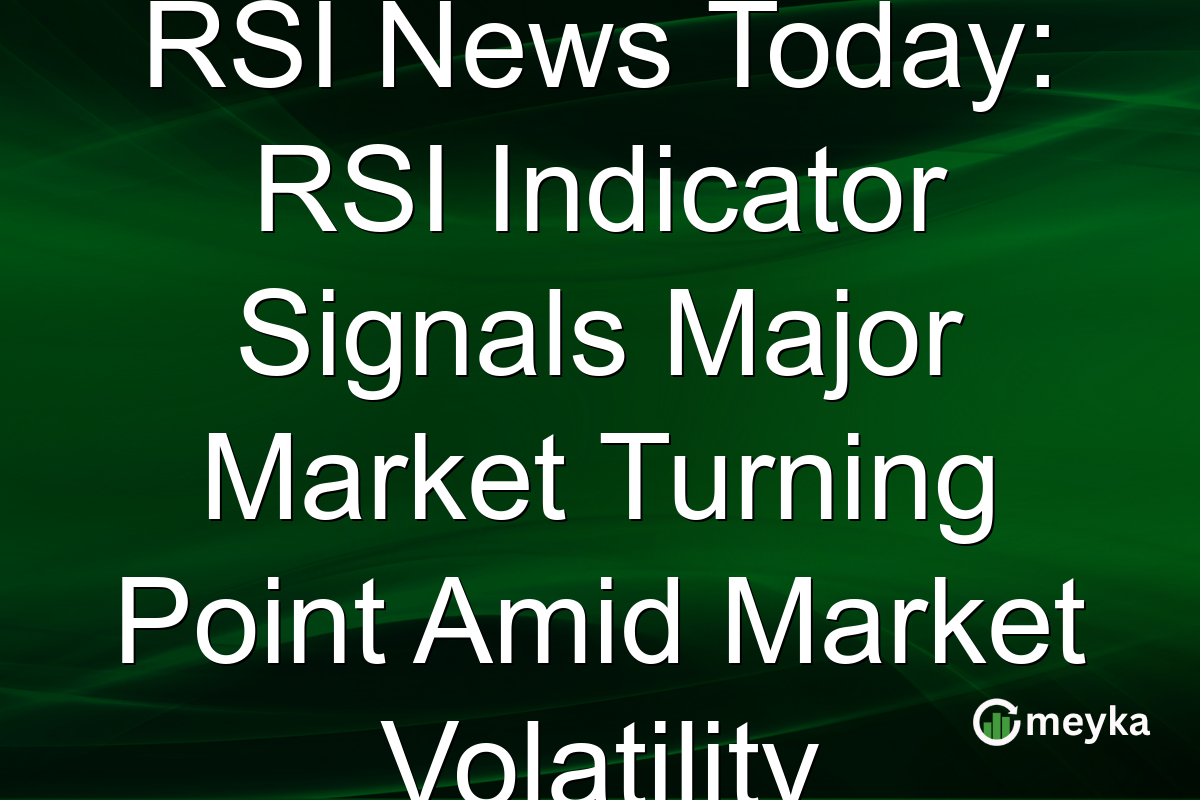RSI News Today: RSI Indicator Signals Major Market Turning Point Amid Market Volatility
Today, the Relative Strength Index (RSI) indicator is making headlines due to its role in signaling potential turning points in the market. This influential technical tool has attracted heightened interest from traders, as current RSI levels suggest possible oversold or overbought conditions across major equity indices. With market volatility at its peak, understanding these RSI indicator news insights becomes crucial for investors seeking to navigate the landscape effectively.
Understanding the RSI Indicator and Market Signals
The RSI is a momentum oscillator that measures the speed and change of price movements. Used frequently in financial markets, it ranges from 0 to 100, with values typically above 70 considered overbought, and those below 30 seen as oversold. Recent MarketWatch reports reveal a significant uptick in search frequency for ‘RSI trading signals’ as investors seek insights into market momentum. This increase in attention signals more than just individual trading strategies; it highlights broader investor sentiment shifts. As traders monitor the RSI closely with equity indices nearing critical levels, the debate continues whether these signals point to mere corrections or deeper market reversals.
Current Stock Market Volatility and RSI Insights
The recent market environment is characterized by high volatility, pushing traders to rely on technical indicators like the RSI for guidance. Analysis from top financial platforms like Reuters suggests that several major indices are approaching pivotal RSI levels. These readings prompt contrasting interpretations: one camp interprets them as a precursor to buying opportunities in oversold conditions, while others warn of potential declines. For instance, when the RSI drops below 30, some traders view it as a signal to buy, anticipating a price bounce-back. Conversely, an RSI above 70 might indicate a reckless buying phase, suggesting caution. Thus, these opposing views punctuate the inherent unpredictability in RSI-based trading strategies.
Investor Takeaways from RSI Trading Signals
For investors looking to leverage RSI trading signals effectively, understanding their limitations is essential. While the RSI offers valuable insights into stock momentum analysis, it should not be used in isolation. Regularly corroborating RSI signals with other technical and fundamental analyses can provide a more comprehensive view of market conditions. The trend of rising interest in ‘relative strength index trends’ reflects a broader investor education story in understanding market dynamics. Platforms such as Meyka can offer real-time insights and predictive analytics, assisting traders in making informed decisions amidst the chaos. Ultimately, whether you interpret RSI signals as buy or sell indicators, complementing them with a strategic approach remains key.
Final Thoughts
As market volatility continues, the RSI indicator remains a focal point for traders assessing potential investment moves. Its recent attention underscores the importance of understanding how momentum indicators can guide strategic decisions. By integrating RSI analysis with a broader market view, investors can better navigate uncertainties. The current discussion around the RSI reveals both opportunities and risks, urging an informed and balanced trading strategy. Utilizing platforms like Meyka can enhance decision-making through valuable insights and data-driven analytics. In this evolving landscape, staying updated with RSI trends and integrating diverse analytical perspectives will be crucial for maximizing potential gains while minimizing risks.
FAQs
The RSI, or Relative Strength Index, is a momentum oscillator used in technical analysis to measure the speed and change of price movements. It ranges from 0 to 100, with readings above 70 indicating overbought conditions and below 30 suggesting oversold conditions.
Traders use RSI signals to identify potential buy or sell opportunities. An RSI below 30 typically signals oversold conditions, which some interpret as a buy signal, while an RSI above 70 may indicate overbought conditions, suggesting a sell.
The RSI is considered reliable for assessing momentum, but it should not be used alone. Combining RSI analysis with other technical and fundamental indicators can provide a more rounded view of market conditions.
Disclaimer:
This is for information only, not financial advice. Always do your research.






